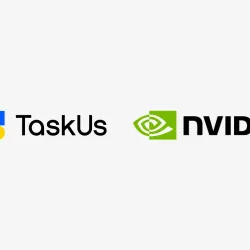Industry Knowledge
Buy Now, Pay Later: The Future of Customer Financing
Picture yourself as a millennial looking to have something that can help you achieve a healthy and active lifestyle. On your mobile phone, you find a high-end bicycle that costs a hundred dollars—something which you cannot afford at the moment. You still click on the “Add to cart” button, and you are pleasantly surprised that installment plan options are being offered, with zero interest. You don’t waste a moment, of course, and you secure your purchase by proceeding to checkout.
Brand new shoes, the latest phone, a designer bag—anyone can pay for anything via installment plans today. Consumers can buy everything they want right now, and pay a predetermined number of installments, often with no interest fees.
Forget about credit cards—welcome to the world of Buy Now, Pay Later (BNPL), a payment solution that allows customers to pay in installments instead of paying the entire amount upon checkout. In the same way that the pandemic dramatically accelerated the market growth of some major trends across industries, the demand for easy online financing options has increased in the past year. Consumers shift toward using BNPL payment solutions in stores as they seek alternative financing methods1.
Why BNPL Services?
In the United States, based on The Motley Fool, 2020, consumers use the BNPL services mainly2:
- To avoid paying credit card interest;
- To make purchases that otherwise would not fit in their budget;
- To borrow money without a credit check; and
- To refrain from use of credit cards due to the difficulty in getting them approved
From the retailer’s perspective, they see value in implementing BNPL as a way to continue to drive sales. According to Oliver Wyman, an American management consulting firm, it facilitated $20-25 billion transactions last 2020 in the US alone. One of the BNPL giants supported this claim and its US customers reached up to $6.5 million last June 2020. And the company's sales also tripled between July to September 2020 compared to 2019.
Millennials and Gen Z as Avid BNPL Solution Users
From a generational standpoint, both millennials and Gen Z have disrupted the payment industry, as most of them are reluctant to spend on credit card interest. According to a survey conducted last November 2020 by CouponFollow, a real-time coupon code search engine and directory, 56% of millennials and 66% of Gen Z shoppers admit that they have started to maximize BNPL options because of the economic blow dealt by the global pandemic. The fact that these young consumers are accustomed to digital-native experiences will likely take this payment landscape to greater heights. Generally, these services do not charge any interest or fees if the consumer made the payment on time3,4. BNPL options are benefiting both the consumers and the retailers—it’s a win-win!
The Future of BNPL
The global pandemic has undeniably accelerated the rapid growth of the BNPL market. As the global BNPL market is on its uptrend, the industry will process $680 billion worth of transactions in 2025. This is a 92% increase compared to $353 billion in 2019. It will also reach a value of 12% of the total eCommerce spend on physical goods by 2025. The use of BNPL via mobile devices will also grow at a 16% compound annual growth rate (CAGR) through 2018 to 2025, compared to online channels which will only have a 1% CAGR.
The popularity of BNPL is expected to increase through the years in North America, but Europe will be the key player. Europe is expected to have a $347 billion BNPL eCommerce spending come 2025, which is 30% of the total predicted spending for that year. Klarna, AfterPay, and PayPal are still expected to be the leaders for this growth5.
Aside from the key players in the United States and Europe, venture capital firms in Southeast Asian countries are eyeing BNPL, especially in developing countries such as Singapore, Malaysia, and Vietnam. The underbanked population in Southeast Asia has the most potential to become BNPL adopters, with a market size of almost half a billion potential users. The Southeast Asian eCommerce revenue is expected to grow by $100 million by 2025, with a compound annual growth rate of 10.3% between 2021 and 20256.
Challenges
Given the strong adoption of BNPL, this solution is evidently poised for growth. However, as the market grows, so will cases of fraud risks and identity theft[6]. As the global unemployment crisis continues, fraudsters are taking advantage of the unemployed consumers riding this trend, usually by hiring them in exchange for cash. Also known as first-party fraud, these unemployed consumers act as “mules.” Mules work closely with fraudsters, providing their personal information, including bank account details, which fraudsters use to open credit accounts and to move money. The mule is tasked to establish a BNPL account, purchase products, make the initial down payment, and receive the goods. He or she will then forward the items to the fraudster, and then stop posting payments—resulting in a second-pay default rate for BNPL companies7. Fraudsters are then able to profit from these products by simply reselling them.
This is just one of the countless challenges that the BNPL market is facing. Because, unlike other payment options, BNPL fintechs do not issue data to the national bureaus. Thus, consumers’ credit reports and risk scores may not reflect an accurate financial standing.
Our Solution
Consumer risks in the space are inevitable. Fraudulent activities are unsurprisingly rampant. This will eventually result in losses for retailers, shoppers, and BNPL providers.
But here’s the good news: Securing the digital space is important to Us! TaskUs is known for its efficiency in protecting the digital assets of our FinTech partners. We provide support for such companies in a number of ways: review of bank statements for potential fraud, data entry, assistance to customers who use the client's platform to make purchases with payment changes, clarification of declined orders, and management of merchant disputes via phone and email support, to name a few.
Furthermore, our Information Security team ensures clients’ safety by performing comprehensive fraud risk assessments for every campaign. TaskUs deploys multiple layers of security controls, as well as data loss prevention technologies, to mitigate risks.
Learn more about TaskUs risk management and how we keep our customer data safe and secure.
References
We exist to empower people to deliver Ridiculously Good innovation to the world’s best companies.
Services









